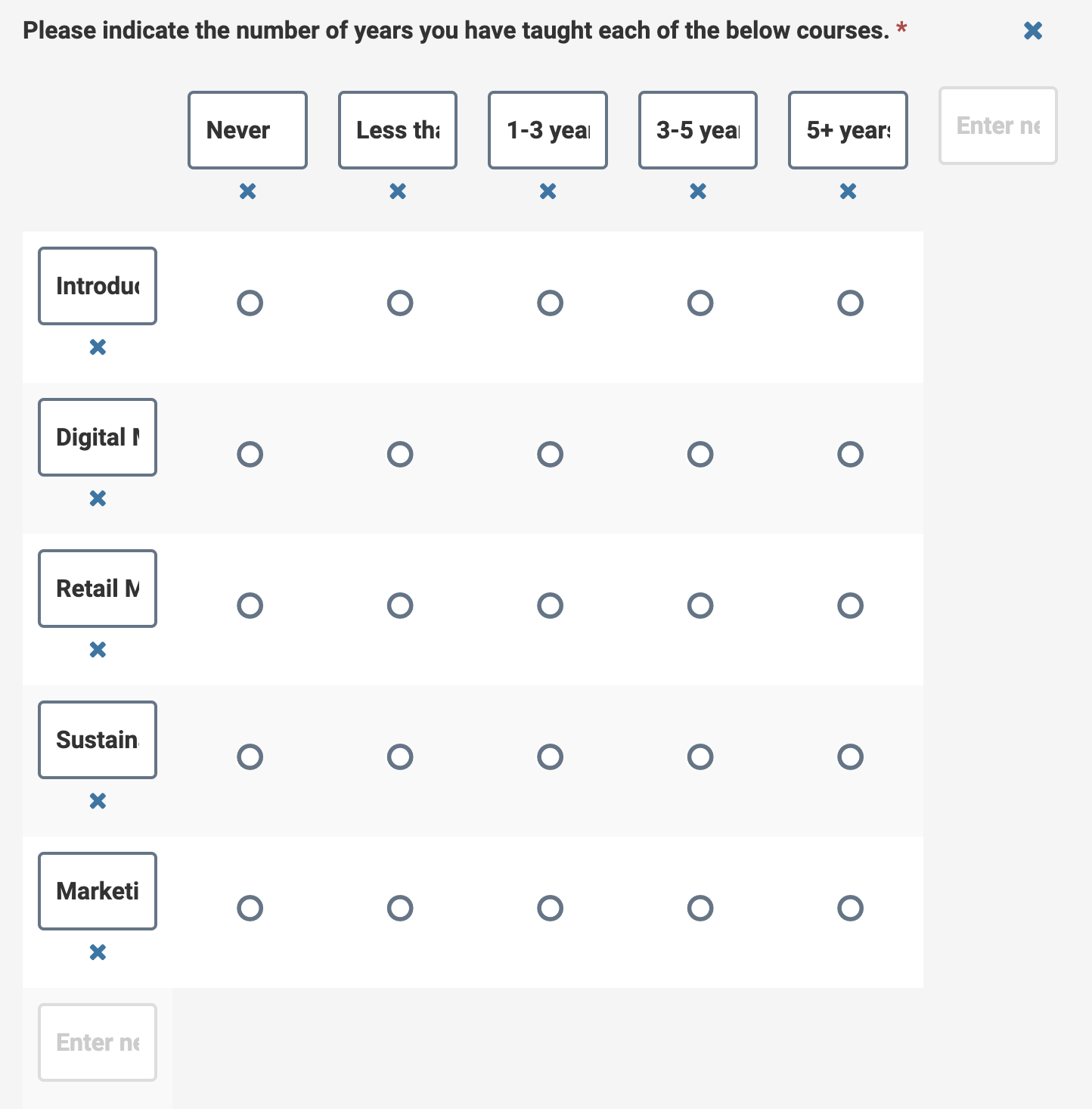Create and Manage Custom Application Form
Faculty Search (FS) automatically collects basic applicant data (e.g. names, emails, and contact information) and typical documents (e.g. cover letters, CVs, and letters of recommendation). To capture additional information, administrators can create custom application forms. These forms can be added to new or existing positions and, if required, set as mandatory for all positions within a unit. Mandatory forms cannot be removed by lower-level administrators.
Create Custom Application Form
- Navigate to the Administration page and select the Application Forms tab. Ensure the desired unit is selected under the ‘Settings for:’ dropdown at the top of the page. Displayed forms are based on your access level, not the unit you are viewing. Users with higher-level permissions may see forms from multiple units.

Application forms display key details, including form name, unit created at, creator's name, and current status. Users with appropriate permissions can edit or delete forms. If the creator’s name is missing, this typically means the original user account has been deleted or is no longer associated with the system.
- Click +Add Form to begin creating a new form.
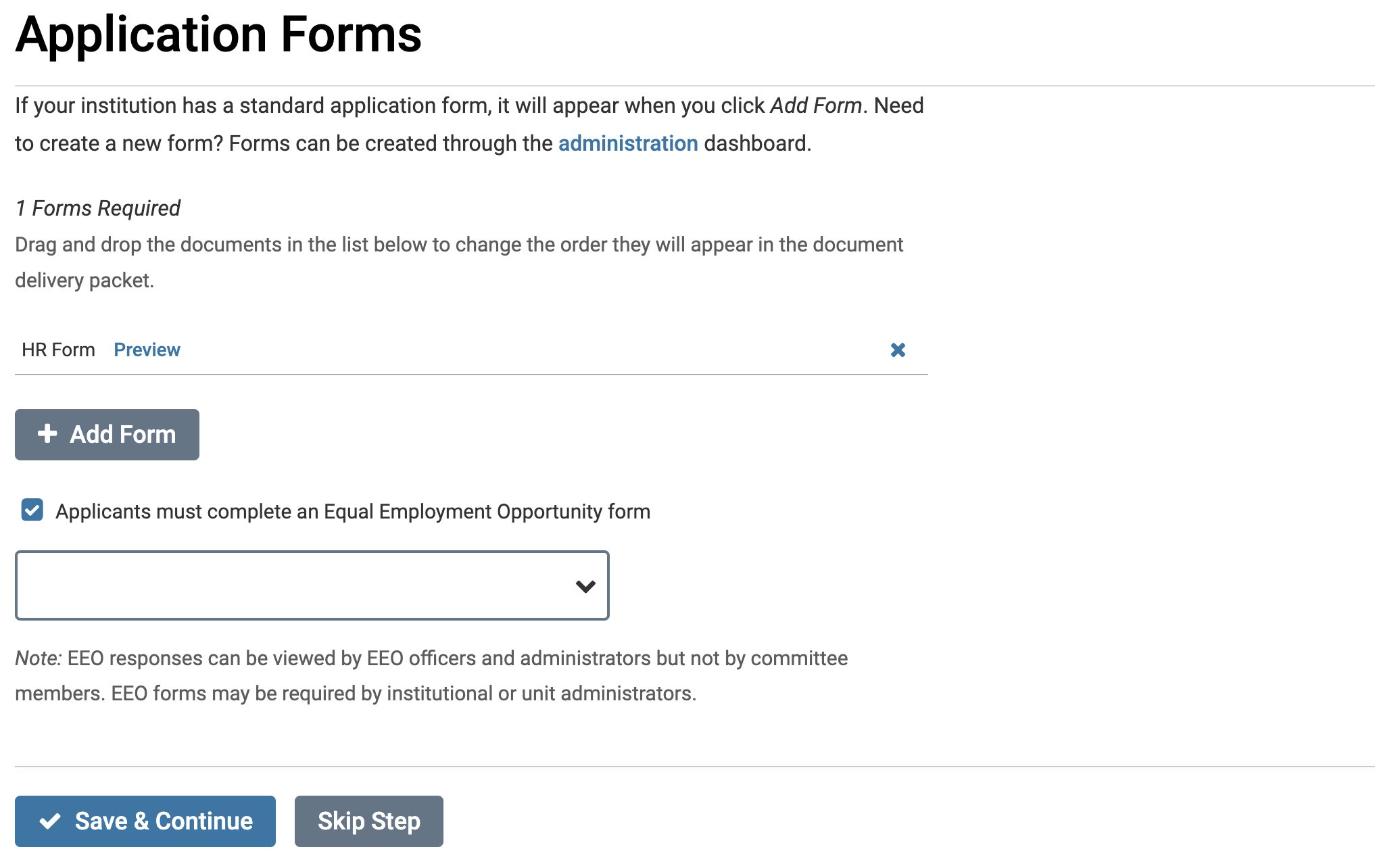
- Fill out the information on the ‘Add Form’ window that appears.
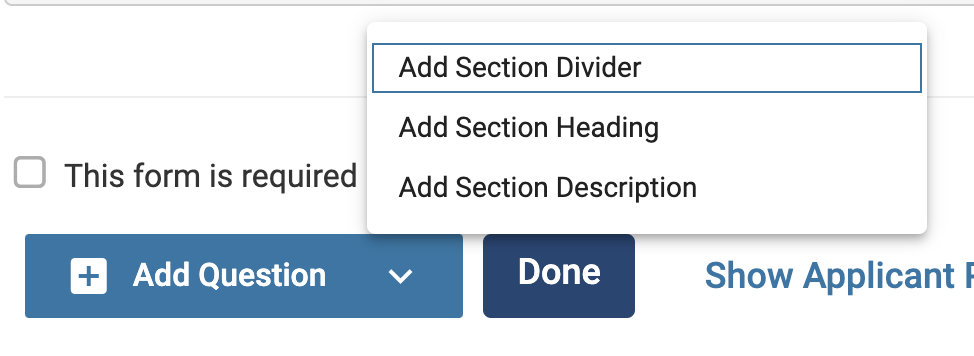
- Add questions by clicking the Add Question button at the bottom of the page.
Questions can be deleted from the form. However, removing a question permanently excludes it from reporting. Only answers from the latest version of the form are included in reports.
- For required questions, ensure the box is checked before saving.
If you need to change this later, you must delete and recreate the question.
- Click the down arrow to the right of the Add Question button to enhance your form by adding sections:
- Divider for visual separation
- Heading for section titles
- Description for context
- Add questions by clicking the Add Question button at the bottom of the page.
For complex forms, combine these elements to improve readability and user experience.
Question Types
-
Text: Short, single-line responses. Ideal for concise, free-form answers.

-
Paragraph: Large text box for detailed responses. Ideal for or longer, paragraph-form responses.
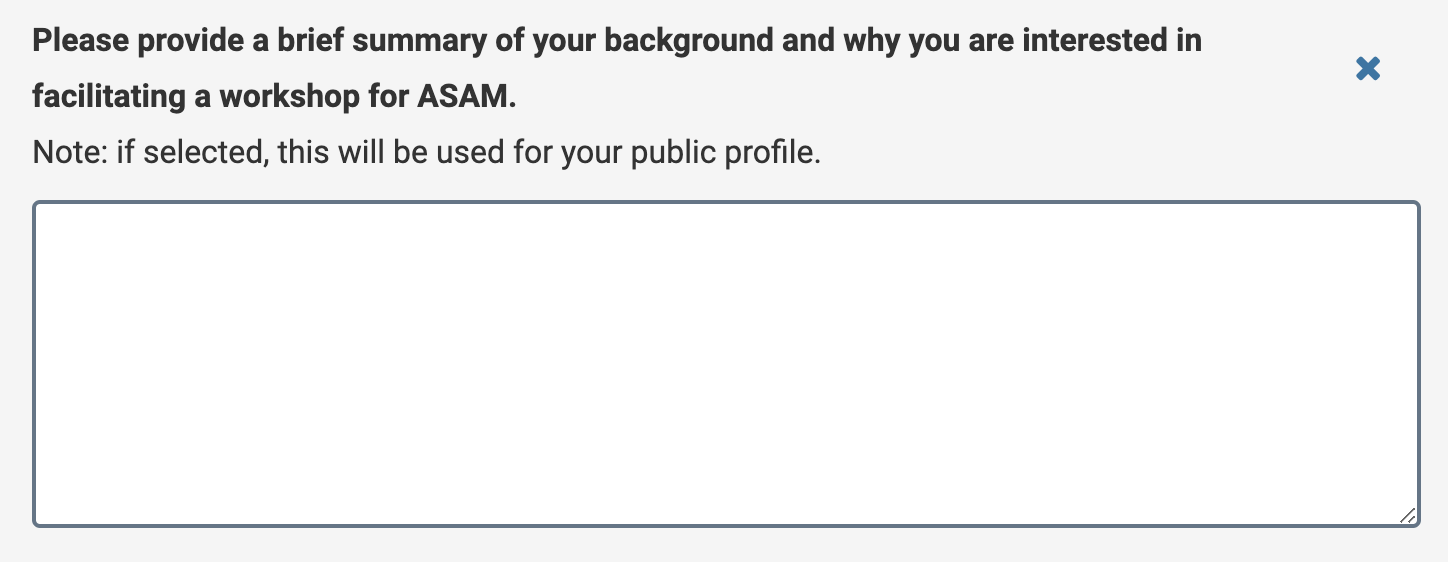
-
Multiple Choice: One selection per question. This type of question can also work for True/False, Yes/No, and other binary questions. Applicants can also be provided with a box for Other, where they enter their own answers.

Once an applicant selects a multiple choice option, they can change their response by selecting another option, but they cannot de-select an option in order to leave the question blank. If you are creating an optional question that does not apply to all applicants, you may want to consider including the “other” option so that applicants can indicate that they chose an answer by mistake.
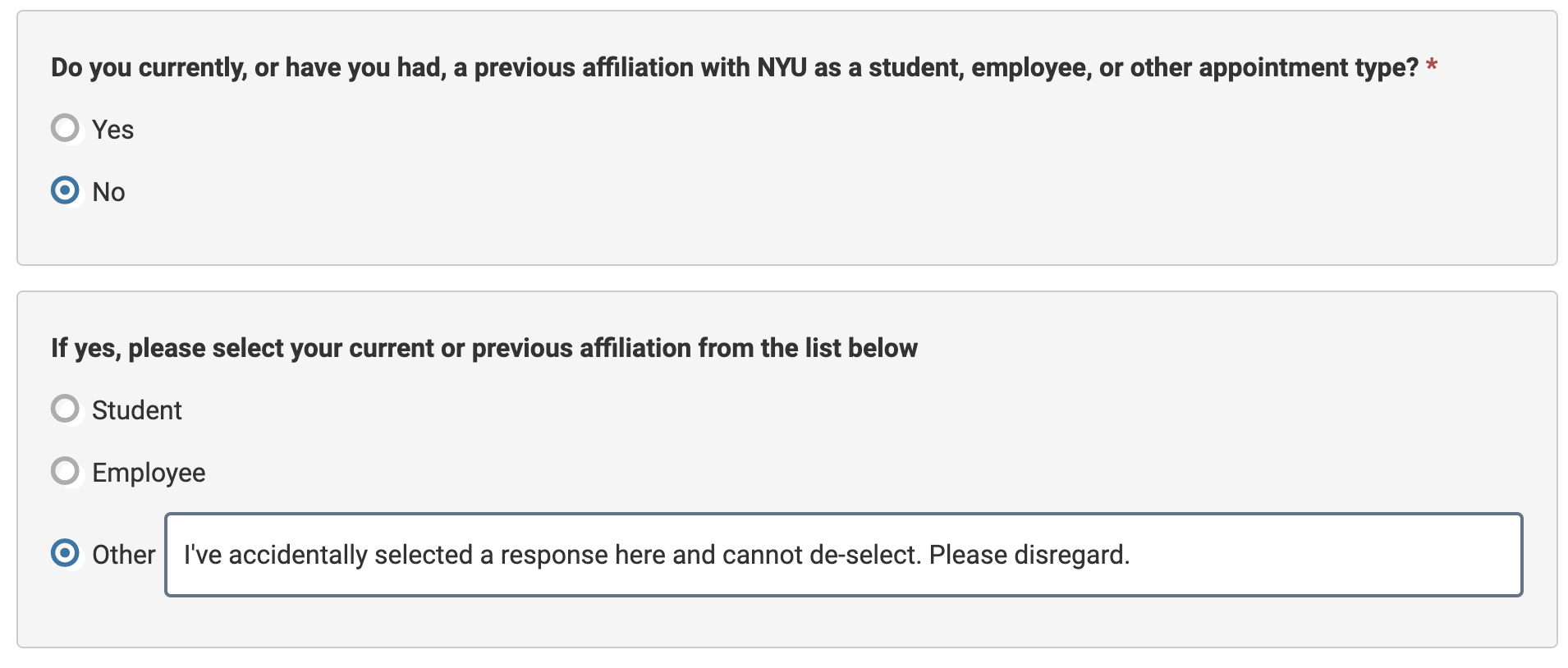
-
Checkboxes: Multiple selections allowed. Include “Other” for custom input.
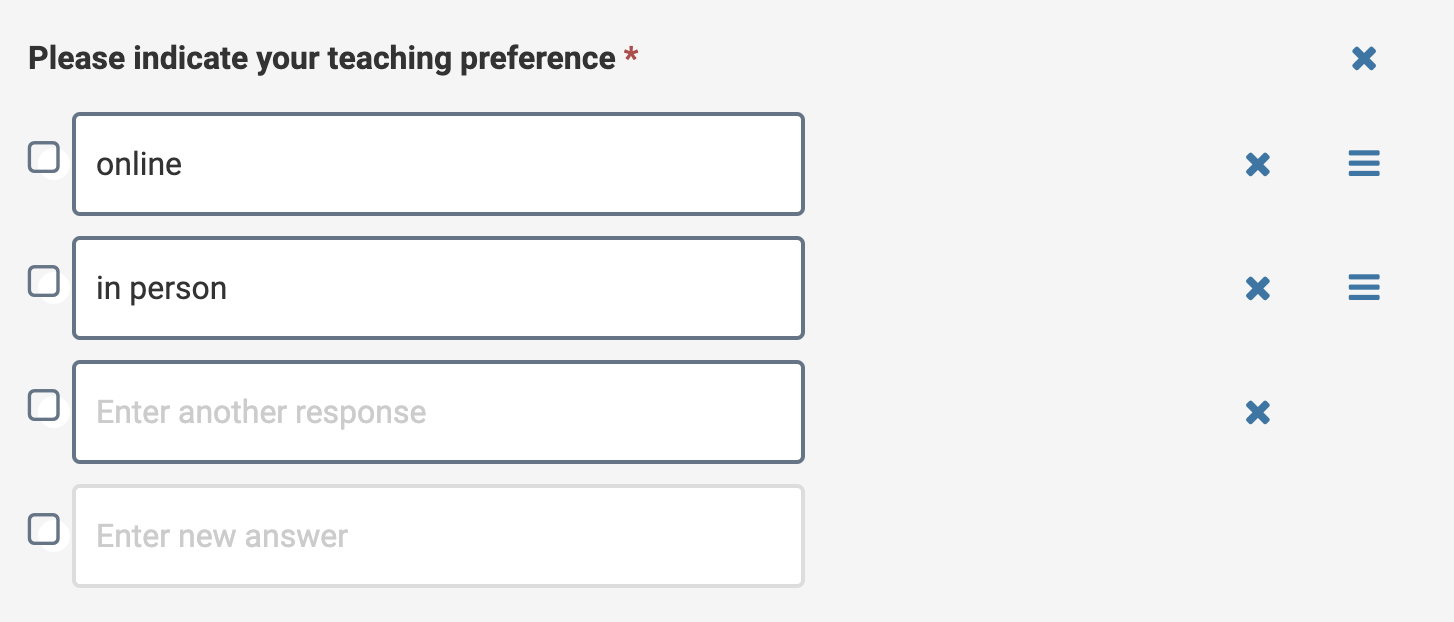
-
Grid: One selection per row. Great for ranking or preferences.
